On my second visit to Colombia, I was once again struck by the vibrancy of its streets. This country doesn’t just showcase its culture, it lives and breathes it. Walking through Medellín, Cartagena, or Bogotá feels like stepping into an open-air gallery, where every corner is alive with art, music, and tradition.
From the aroma of street food to the rhythms of reggaetón and champeta, Colombia’s streets tell a story of resilience, creativity, and community. Every detail, from the colorful graffiti to the bustling markets, is a reflection of the country’s heart and soul.
A kaleidoscope of goods: vendors and artisans
I can’t think of the streets of Colombia without remembering the vendors, whether selling fresh fruits or handcrafted accessories, it felt like a sensory feast, bursting with colors and flavors that made every moment an experience to savor.
A taste of Colombia
I still remember the first time I stopped at a fruit stall in Medellín. The vendor’s hands moved swiftly, slicing a ripe mango, sprinkling it with lime and salt, and handing it to me with a warm smile. A burst of sweet exploded in my mouth, and I felt my taste buds celebrating. It was unlike anything I had tasted before. But this was just the beginning.
Every street corner in Colombia seemed to offer something irresistible, one taste leading to the next, each more delightful than the last. Arepas, golden and thick, filled the air with their warm, buttery aroma, pulling me in. Obleas, delicate wafer discs layered with caramel or cheese, provided a playful contrast of textures and flavors. But my absolute favorite was the mango and passion fruit popsicle, blended with salt and lime, which we found in Comuna 13 and across Colombia. The freshness and balance of flavors were so incredible that I went back to the vendor twice just to experience that perfect mix of sweet, tart, and salty again.
And then there’s the coffee. Whenever I had the chance, I would pause at a small cart to sip a cup of freshly brewed tinto. It wasn’t just the coffee’s bold flavor that stood out, but the ritual itself—the way it brought people together for a moment of warmth and connection. Whether at a street stall or a Juan Valdez Café (Colombia’s answer to Starbucks), people would gather, sipping cup after cup, lingering in conversation, sharing stories, and enjoying the unhurried rhythm of daily life.
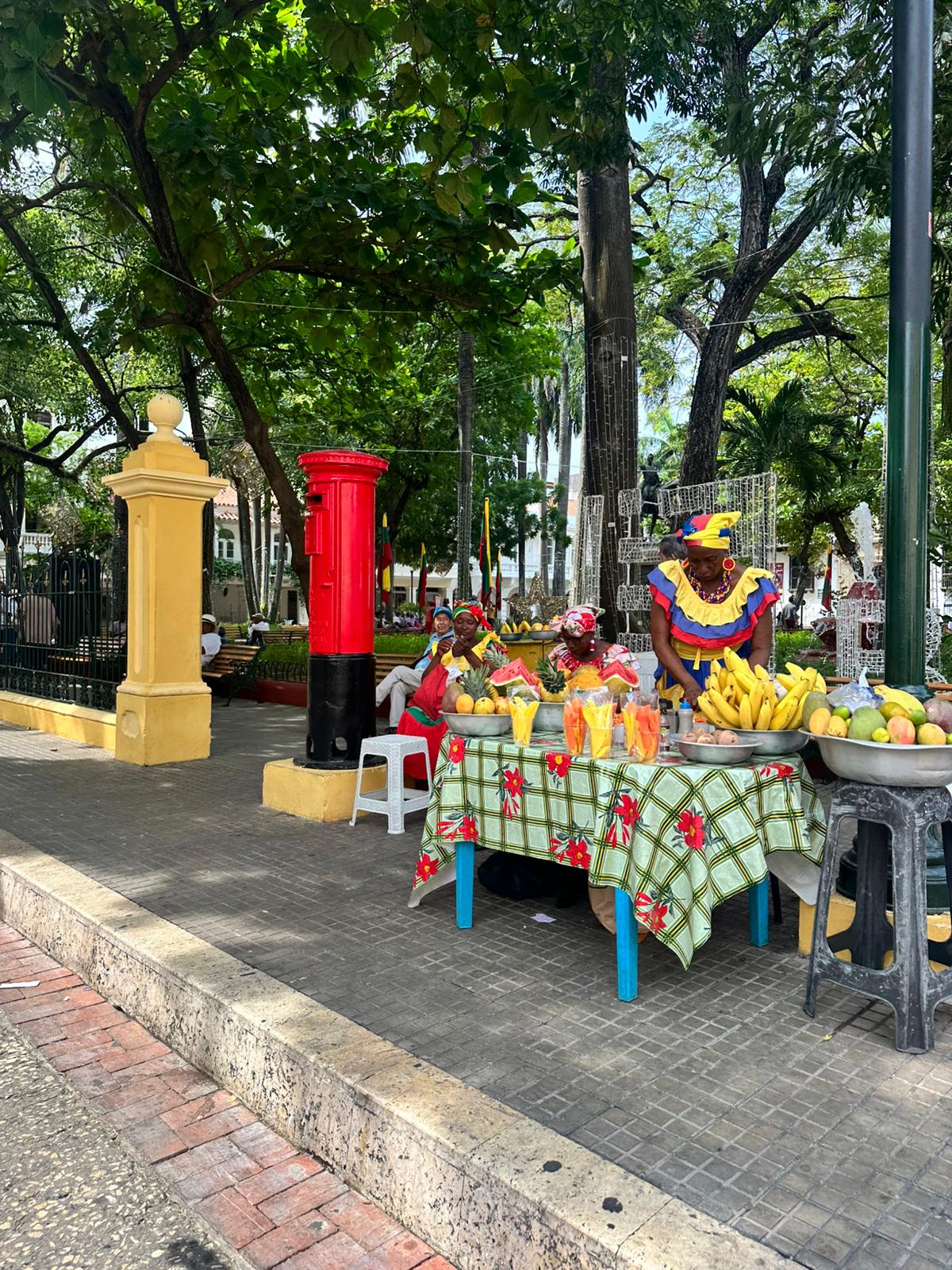
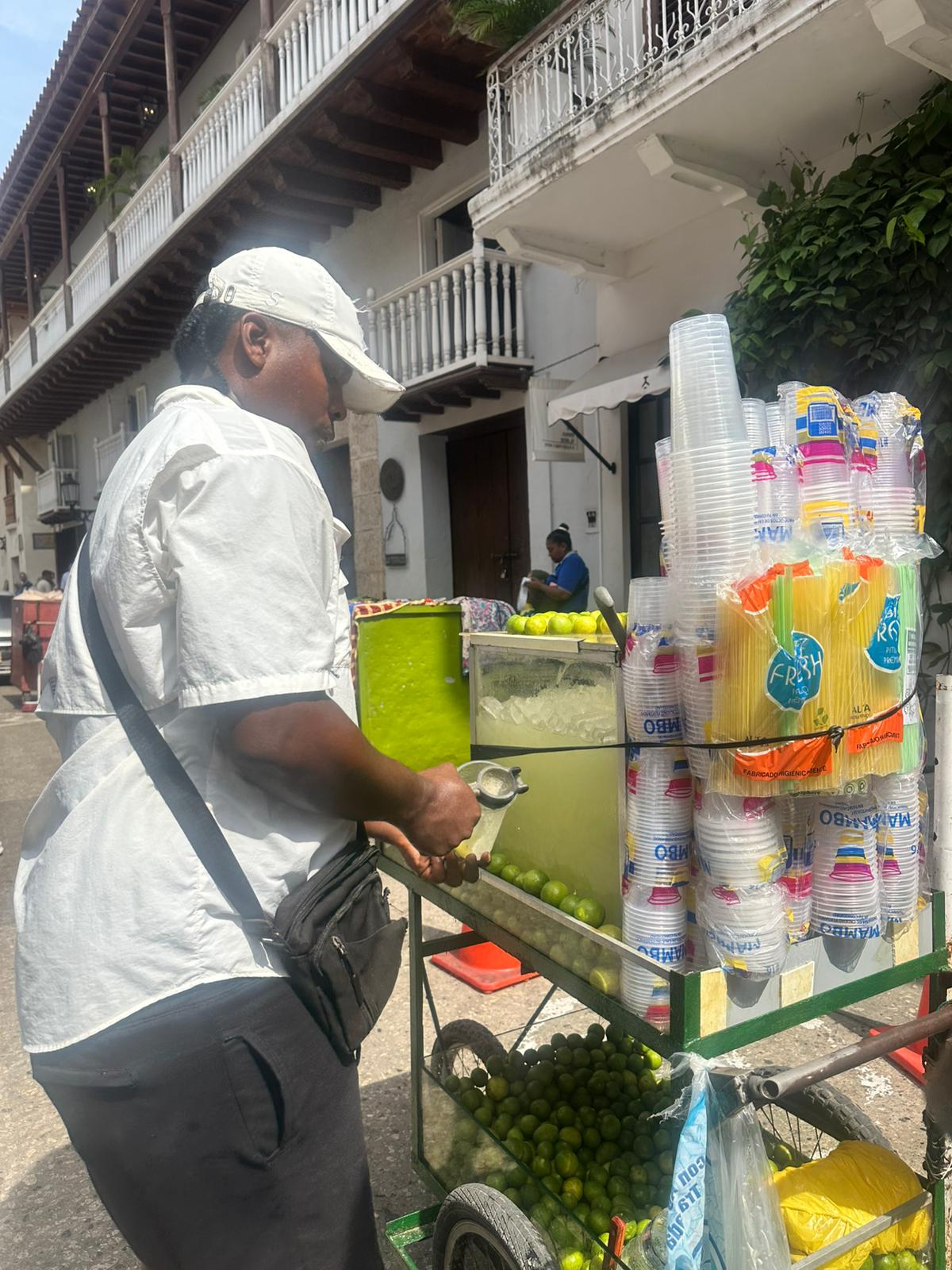
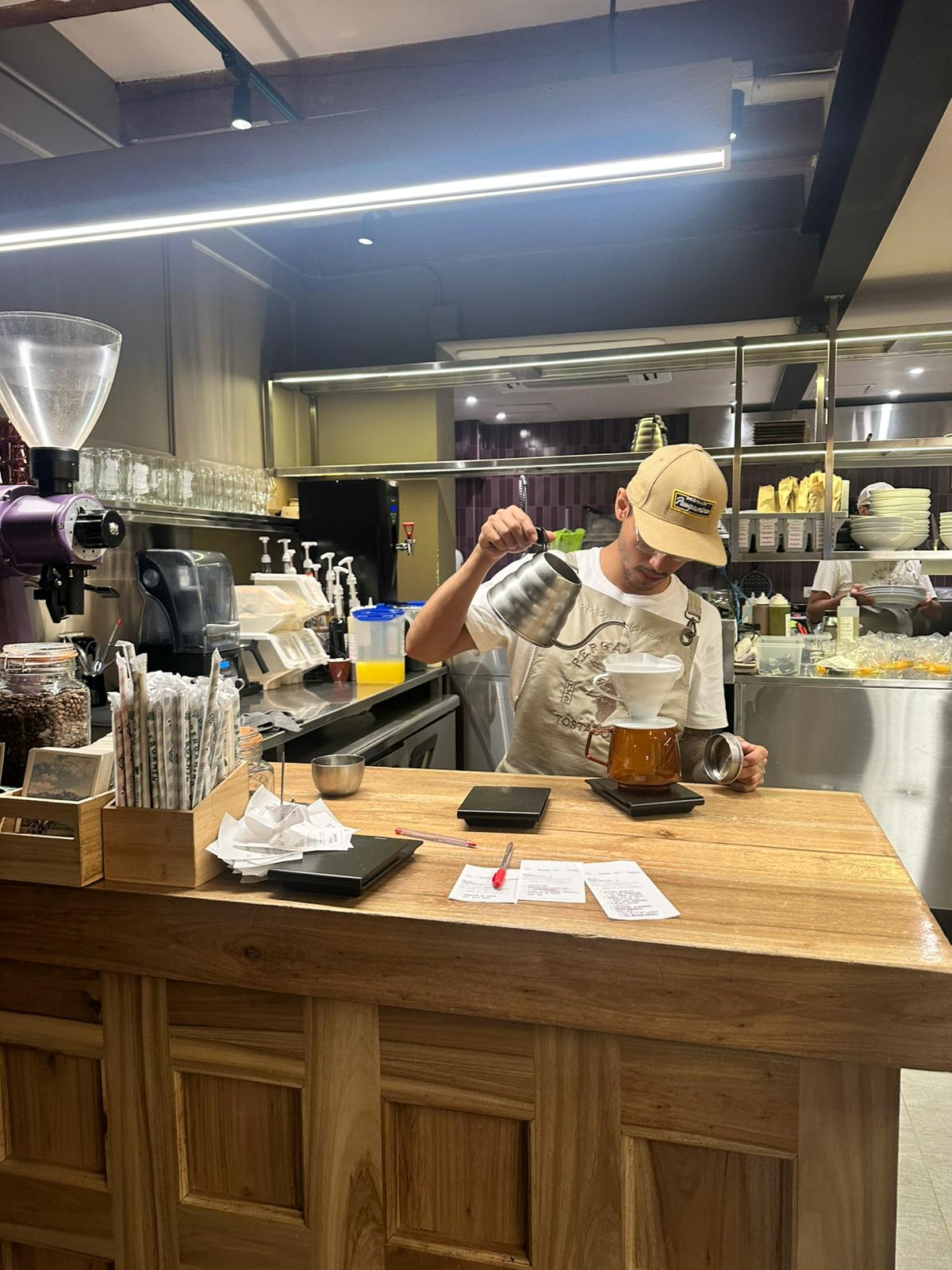
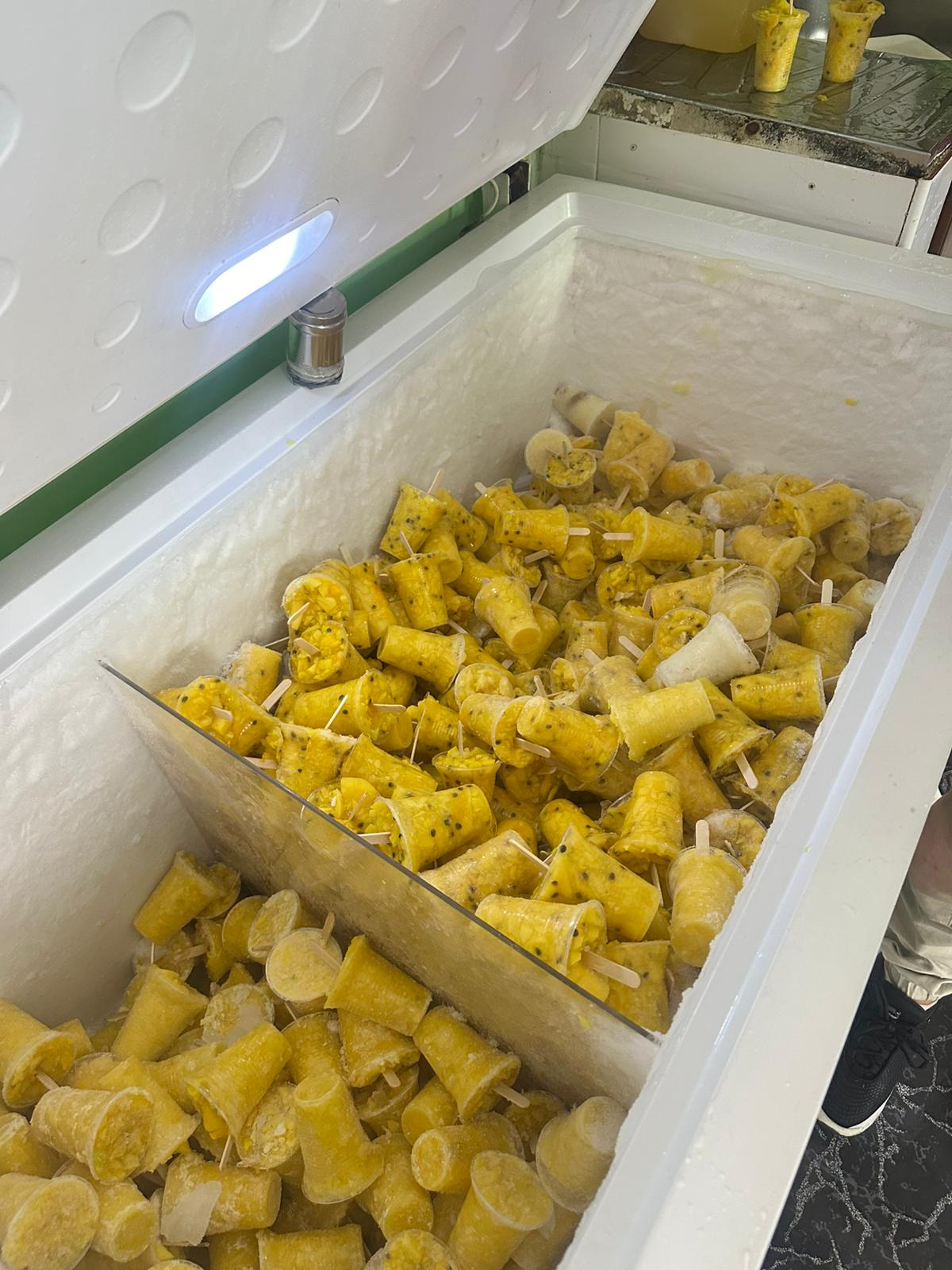
Fruit and coffee vendors
Handcrafted treasures
Beyond the flavors, another expression of Colombia’s rich culture unfolds in its streets, through artisanry and craftsmanship. Vendors display beautifully woven mochila bags, each representing the traditions of Colombia’s indigenous communities. I was drawn to the colorful beadwork at jewelry stalls, where every piece seemed to capture the energy of the streets. With so many options, I wanted to buy everything, but I finally chose a round handbag, its bright colors reminding me of a sunrise. It was the perfect way to carry a piece of Colombia with me forever.
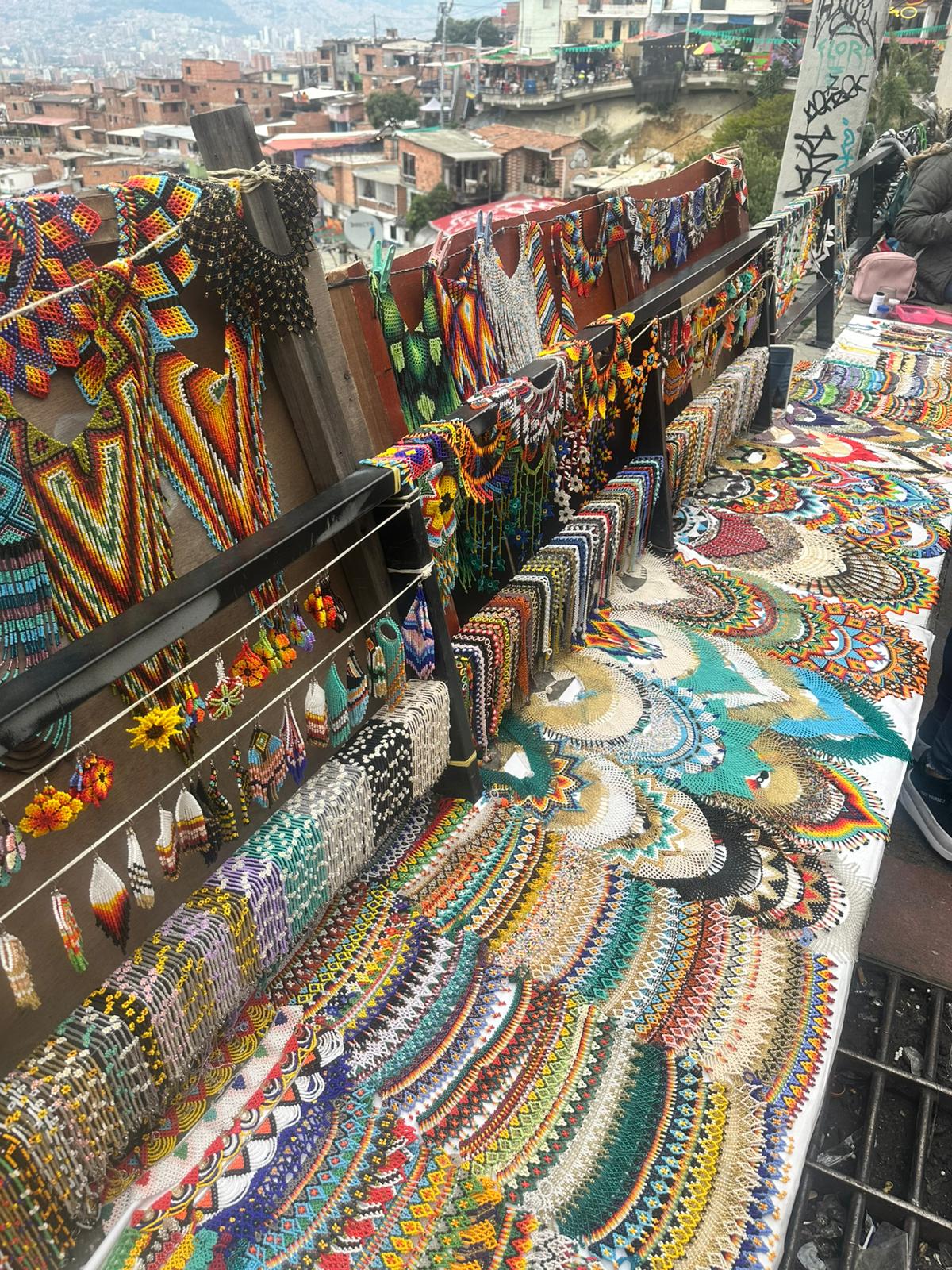
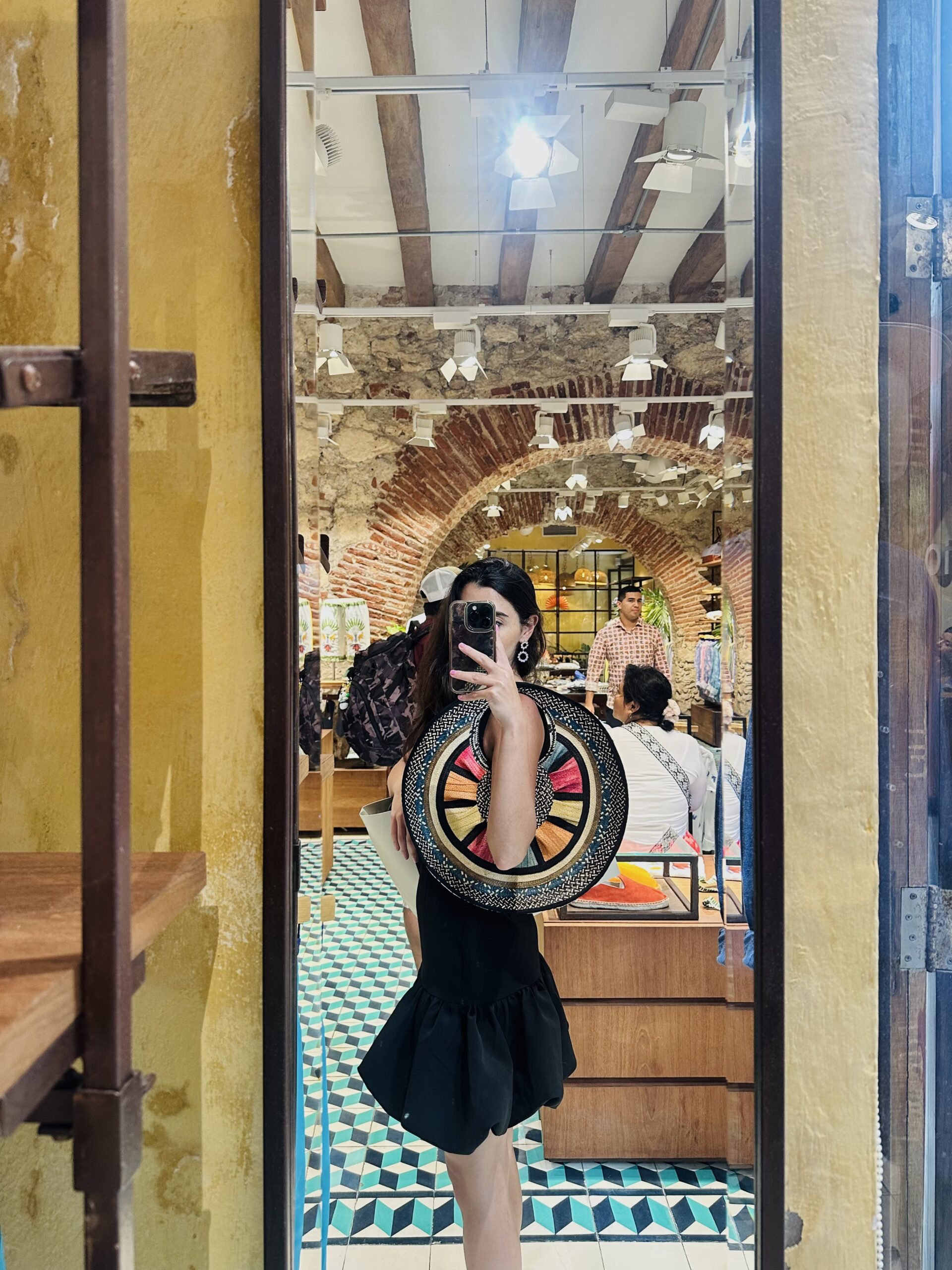
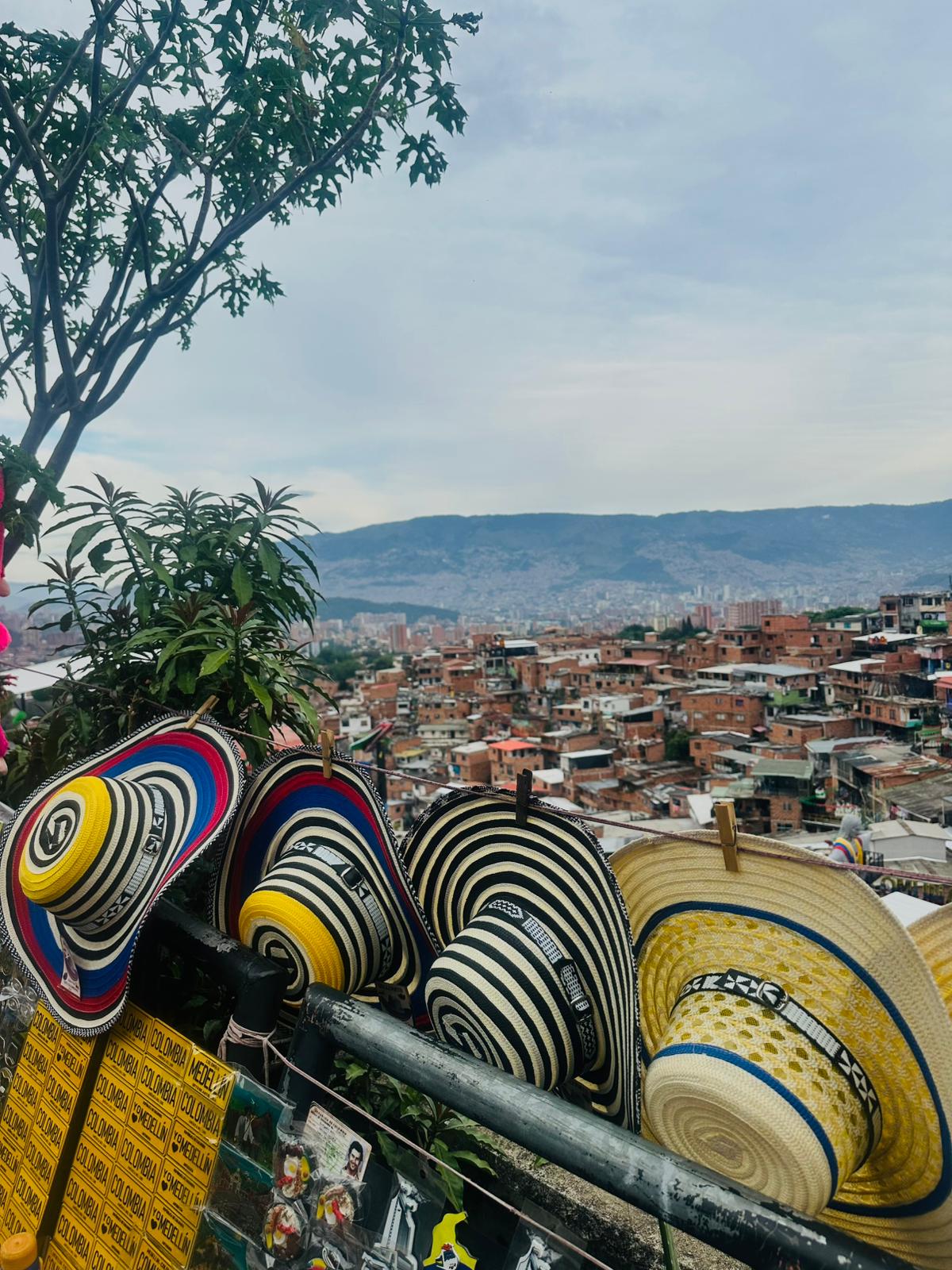
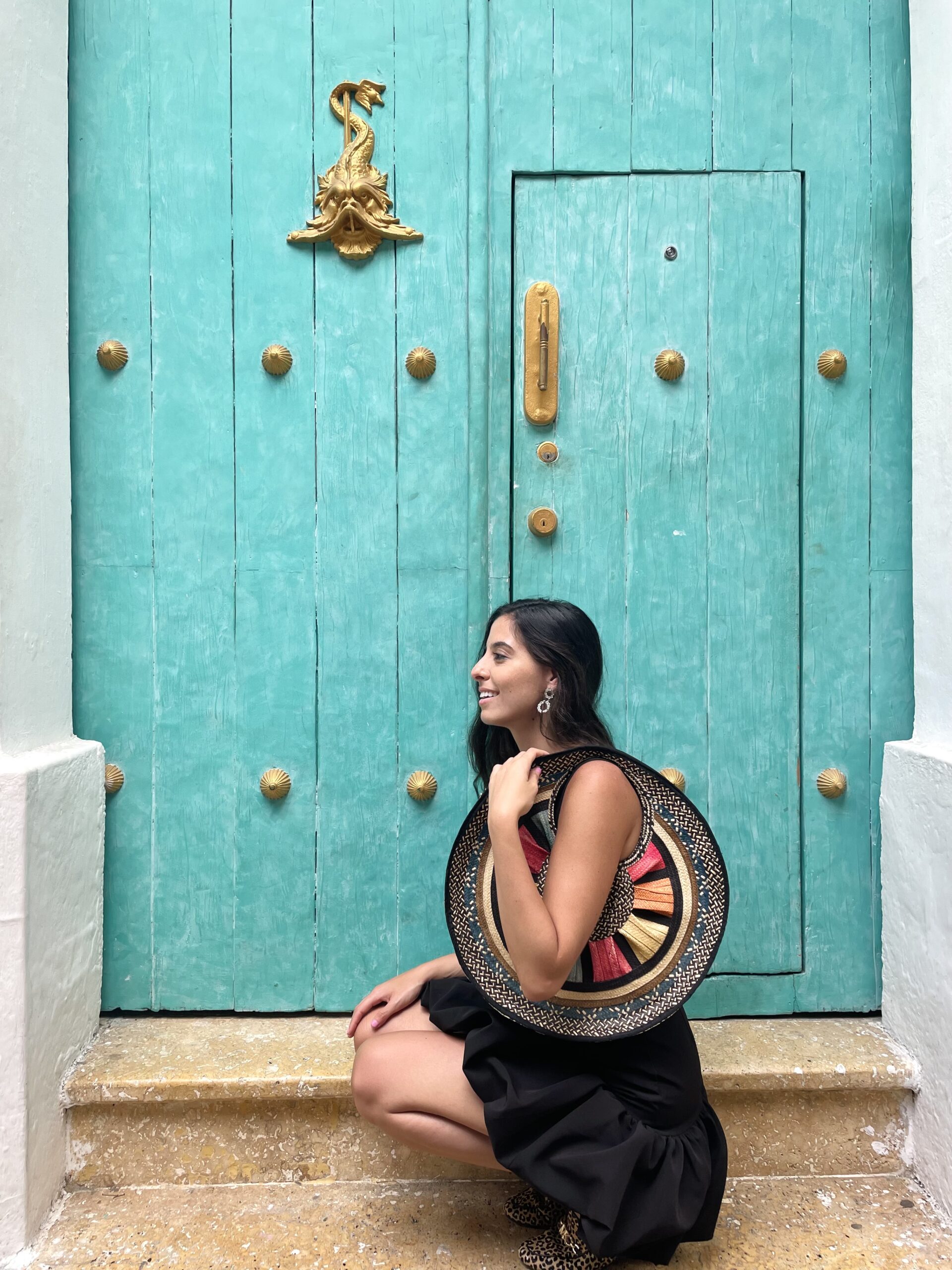
Artisanal accessory
Then there were the Palenqueras, women in radiant skirts, effortlessly balancing baskets of fresh fruit on their heads with a grace that seemed to defy physics. Their presence was mesmerizing, a living symbol of Cartagena’s rich coastal heritage. I couldn’t resist taking a photo with one of them, and for a brief moment, I felt as if I had stepped into a postcard of Colombia. More than just vendors, these women were walking art, carrying with them the pride and resilience of their culture. It was a scene that felt both timeless and unforgettable.
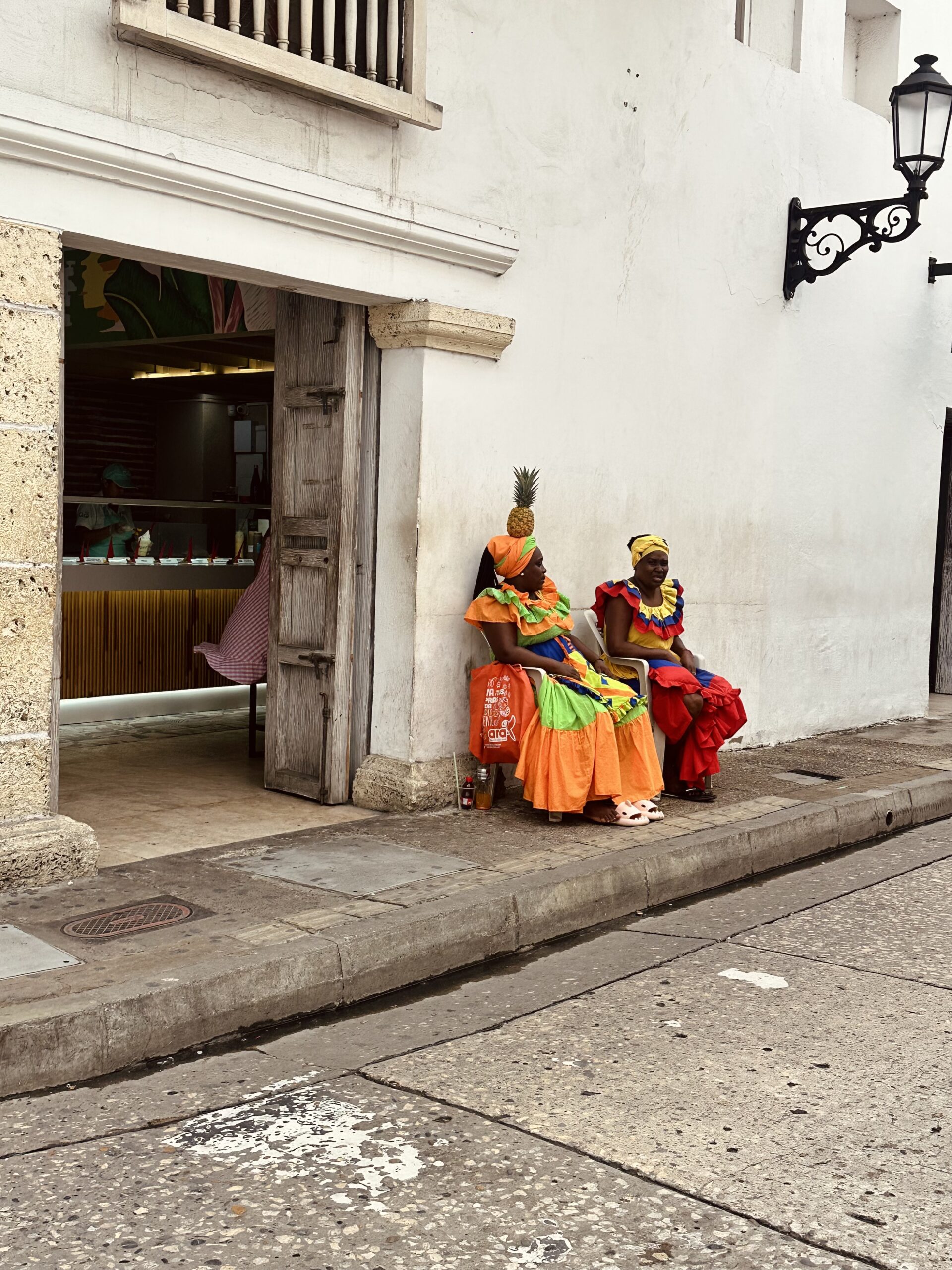
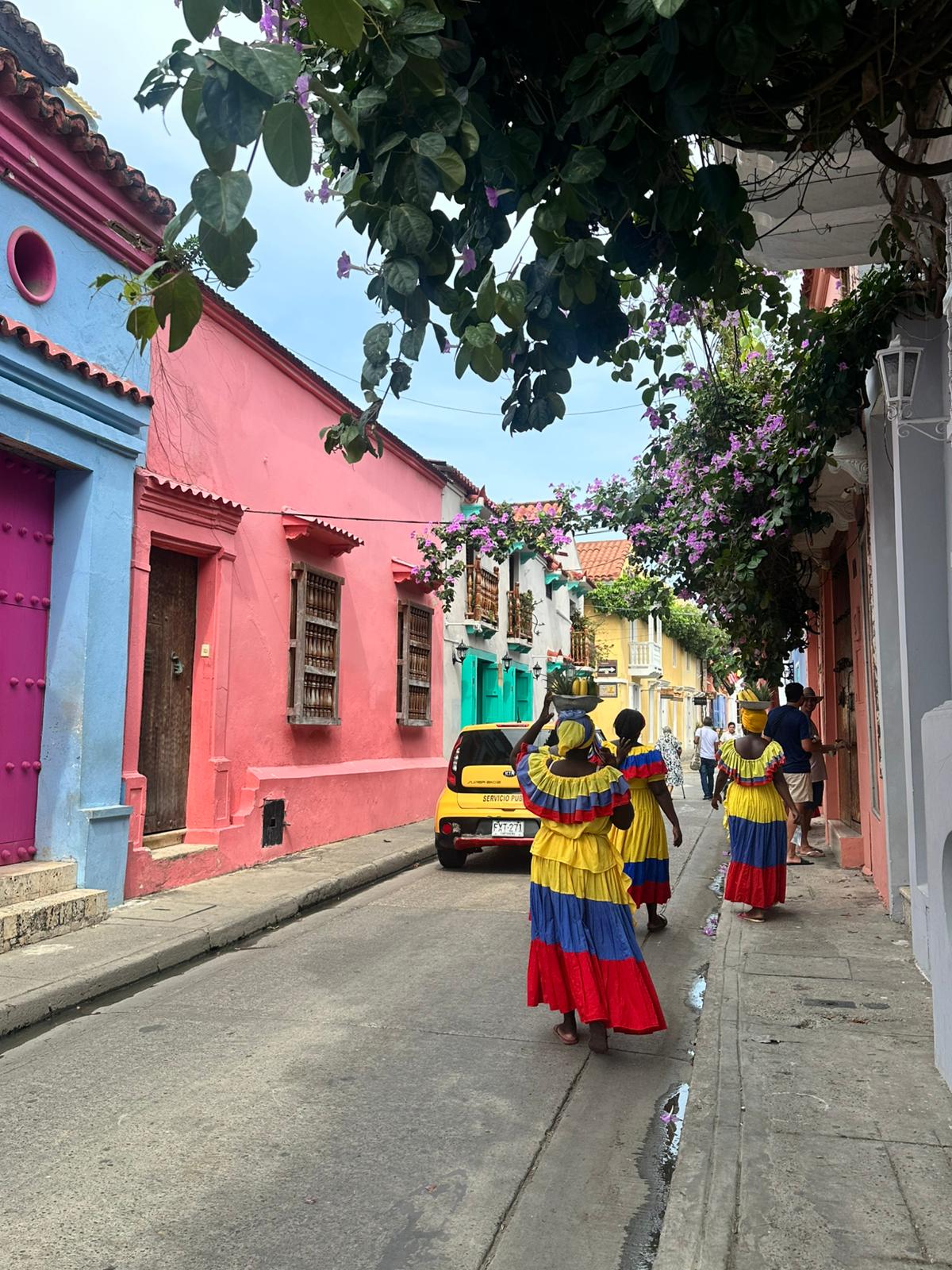
Palenqueras
Art on the streets: stories in color
Just as the vendors bring Colombia’s culture to life through their crafts, the streets themselves are filled with art, where every mural and painting tells a story of resilience, hope, and identity.
Comuna 13: Medellín’s transformation
Walking through Comuna 13 in Medellín, I was overwhelmed by the explosion of color and creativity that surrounded me. Once one of the most dangerous neighborhoods in the city, it has transformed into a hub of street art and hope. Every mural seemed to speak, telling stories of struggle and resilience.
I paused in front of a vibrant mural, its bold colors forming the image of a woman’s face surrounded by doves. A local guide explained how these murals symbolized Medellín’s rebirth, a community emerging from the shadows of its past. The energy of the neighborhood was indescribable, and I felt deeply moved by the power of art to heal and inspire.
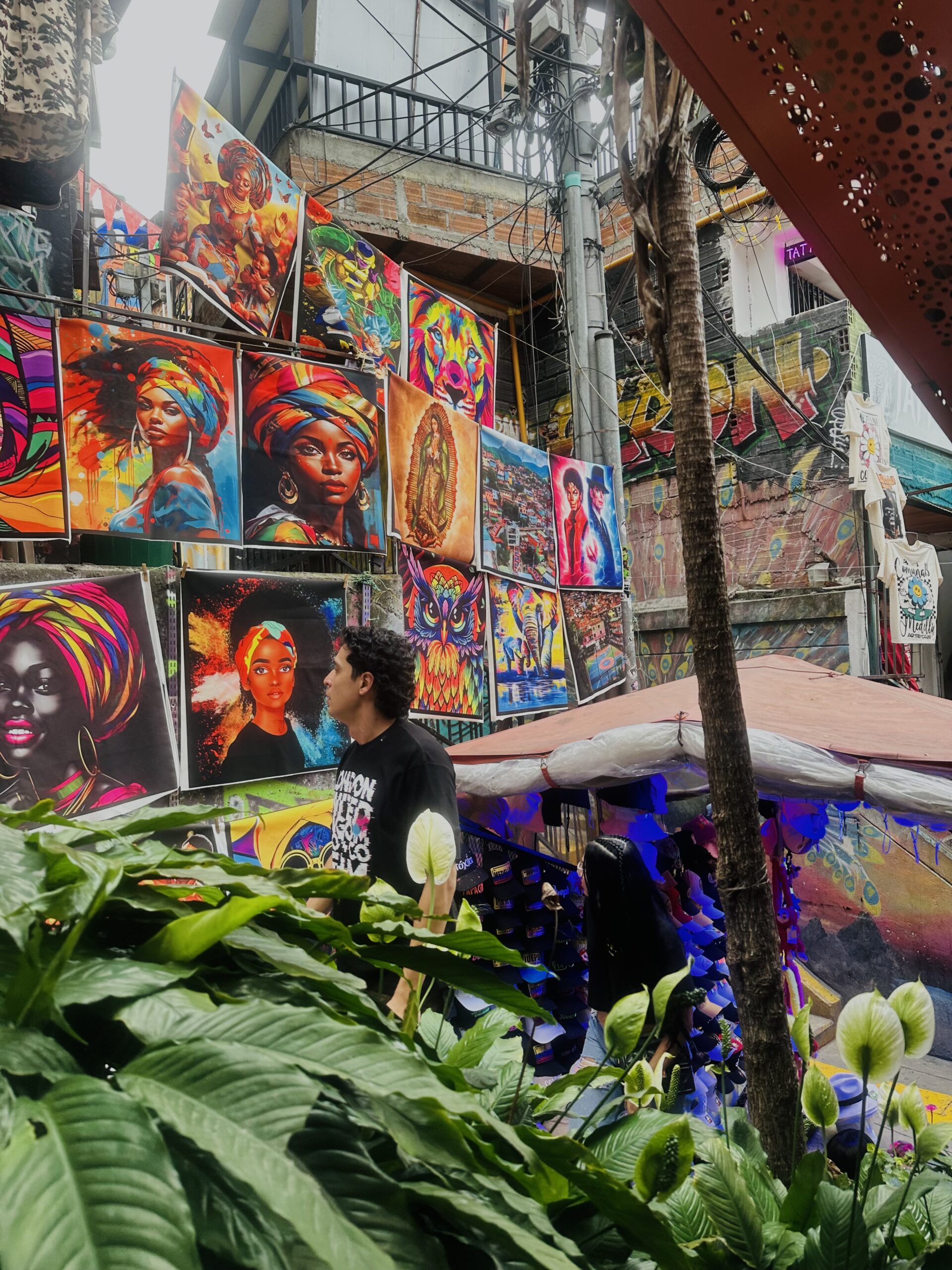
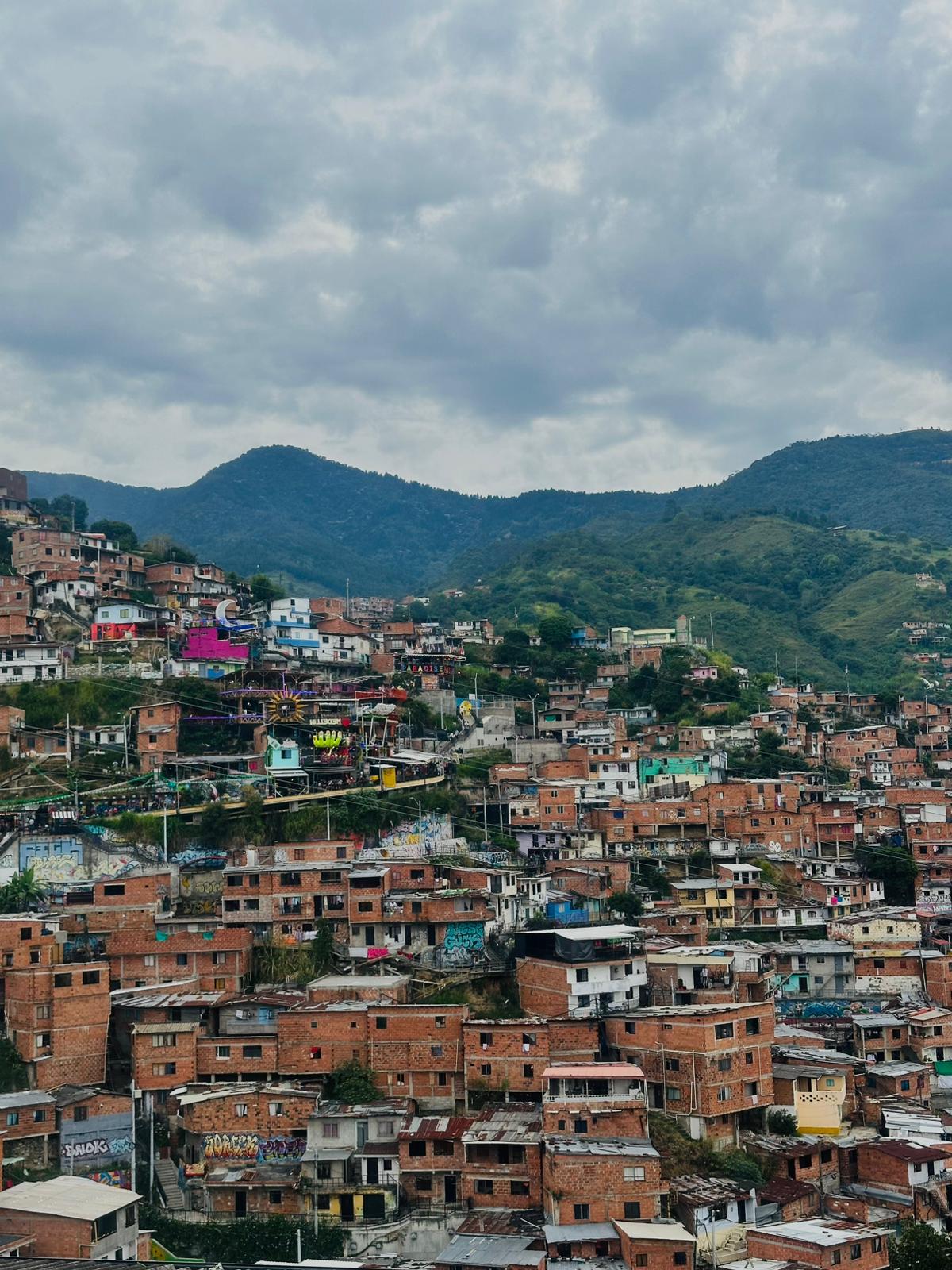
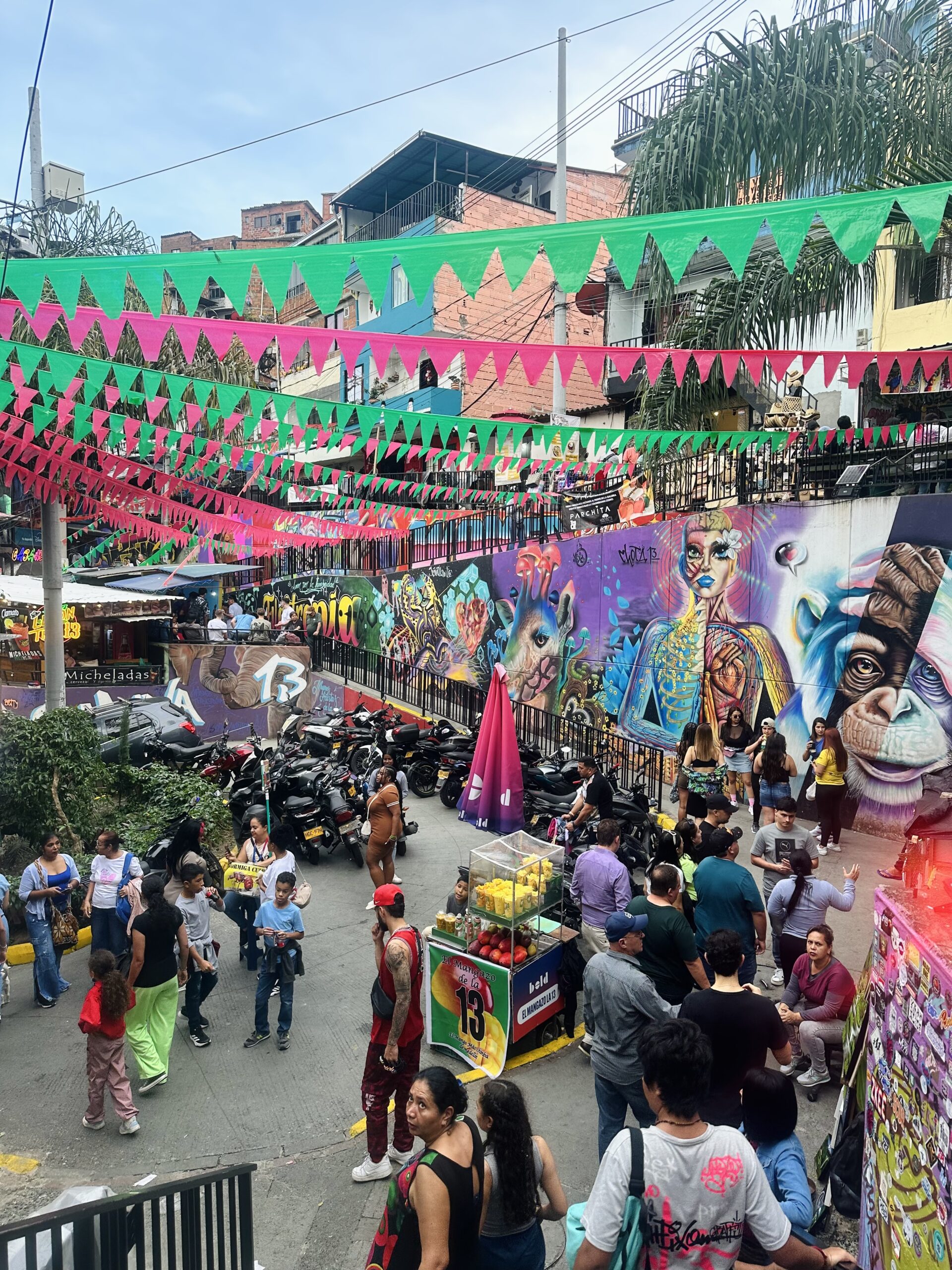
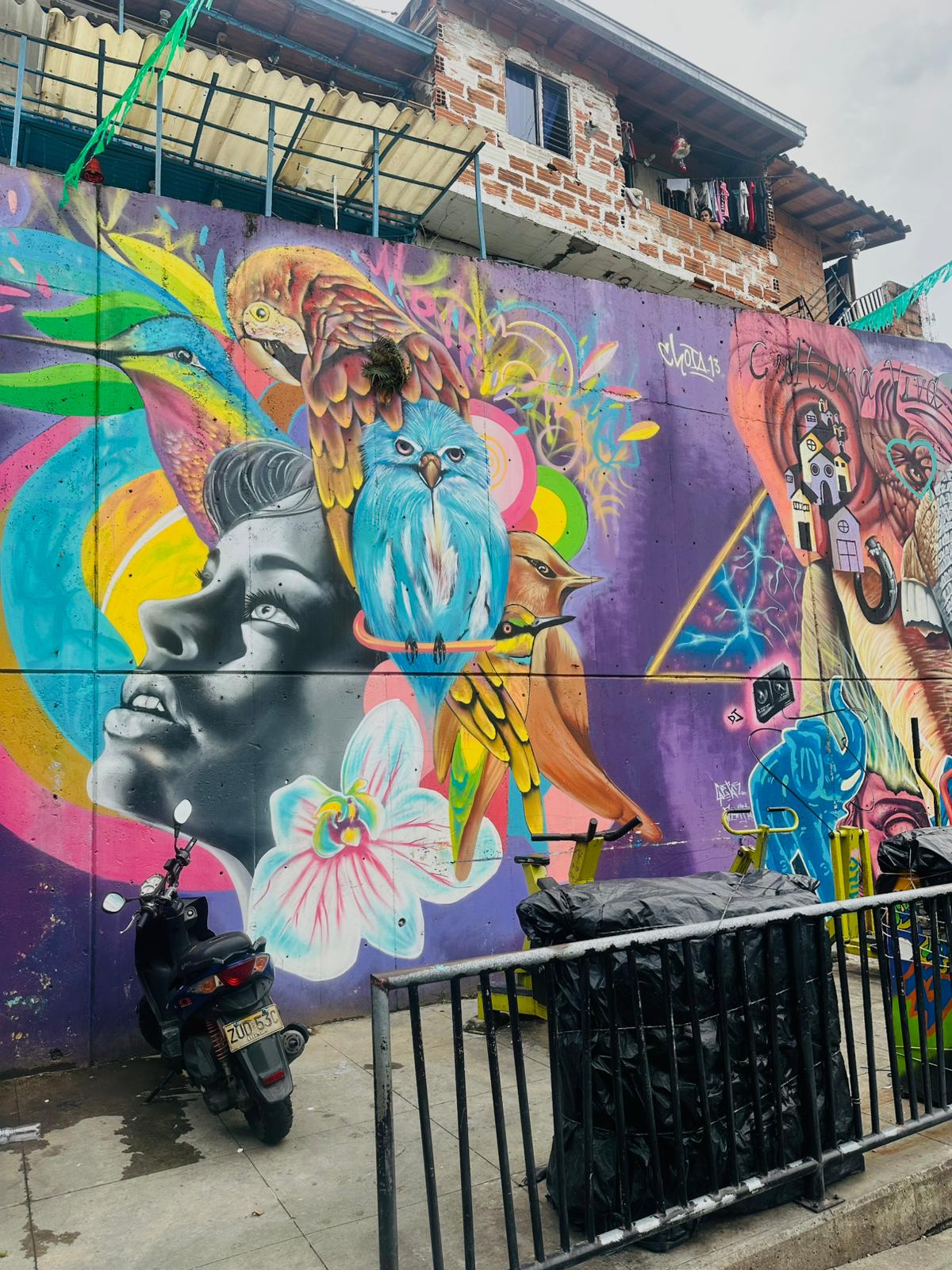
Comuna 13 street art
Guatapé’s zócalos
Comuna 13 was not the only place where art transformed the streets, just outside Medellín, the picturesque town of Guatapé was another vibrant canvas. Here, art wasn’t just painted on walls; it was woven into the very identity of the town through zócalos, colorful panels decorating the lower part of each home. Each design told a story, one house displayed a coffee farmer, another a boat on a lake, symbolizing the lives, trades, and histories of the people who lived there. Walking through the cobblestone streets, I felt as if I had stepped into a living fairytale, where every detail invited me to pause, admire, and connect with the stories behind the art.
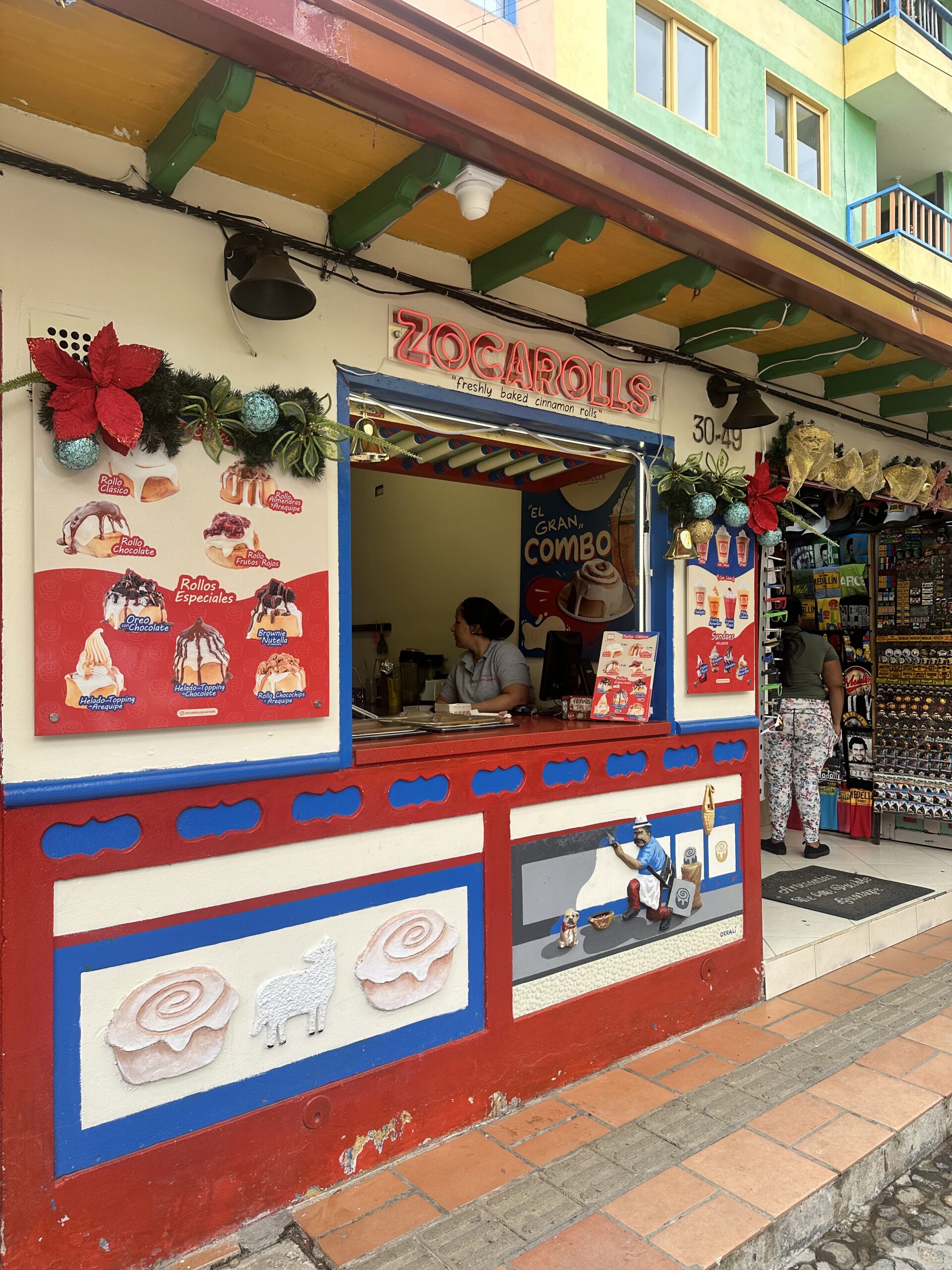
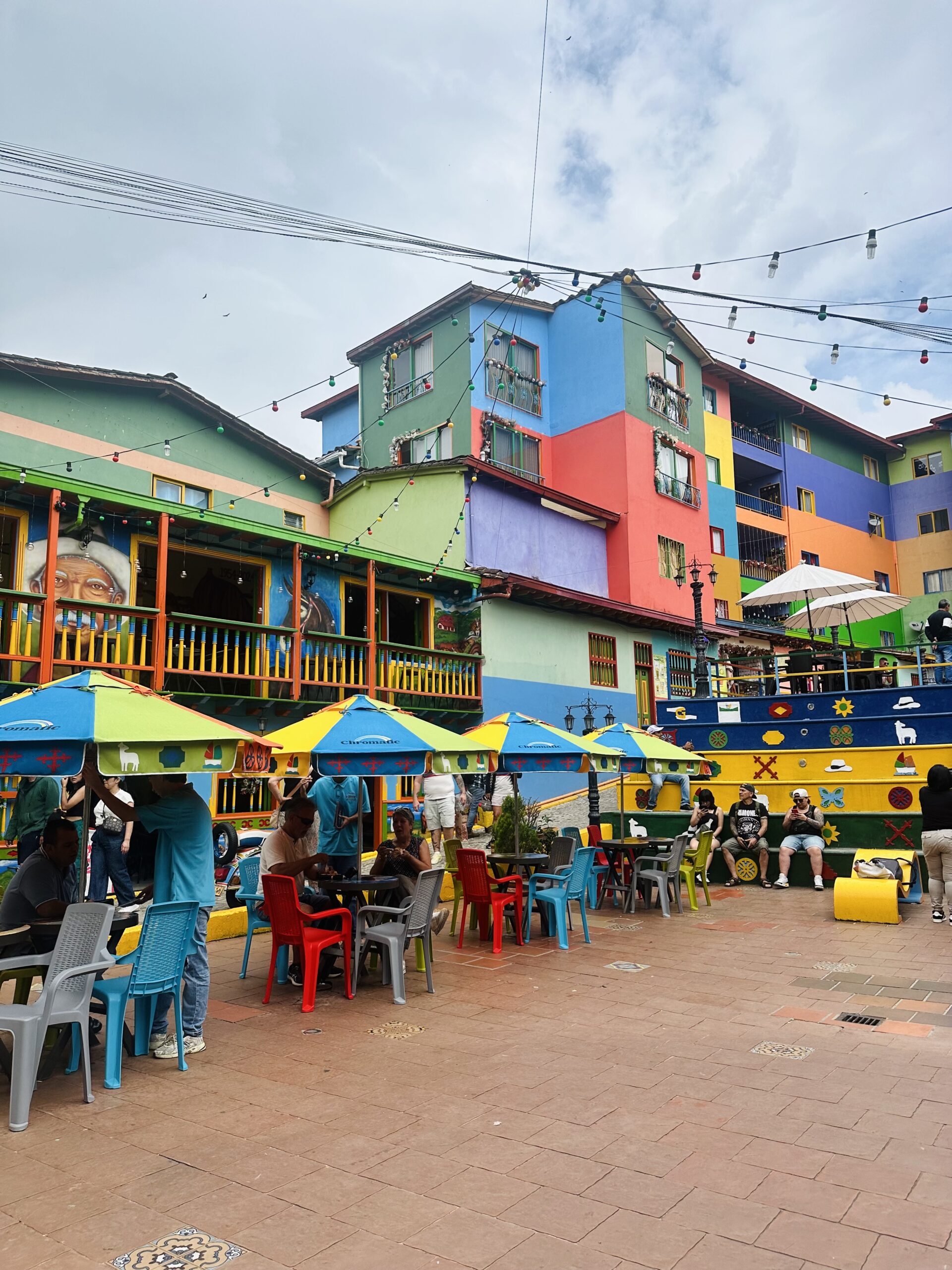
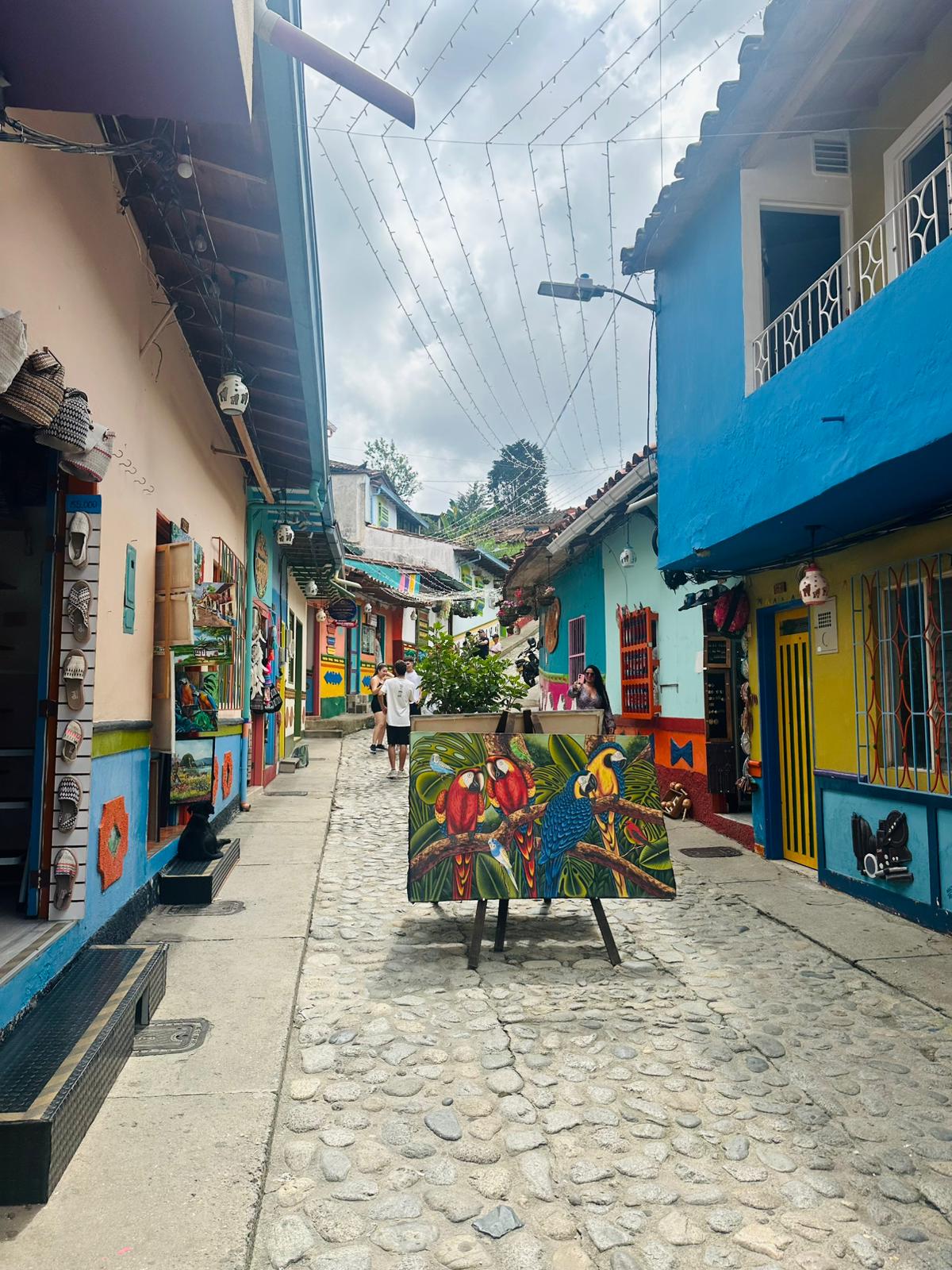
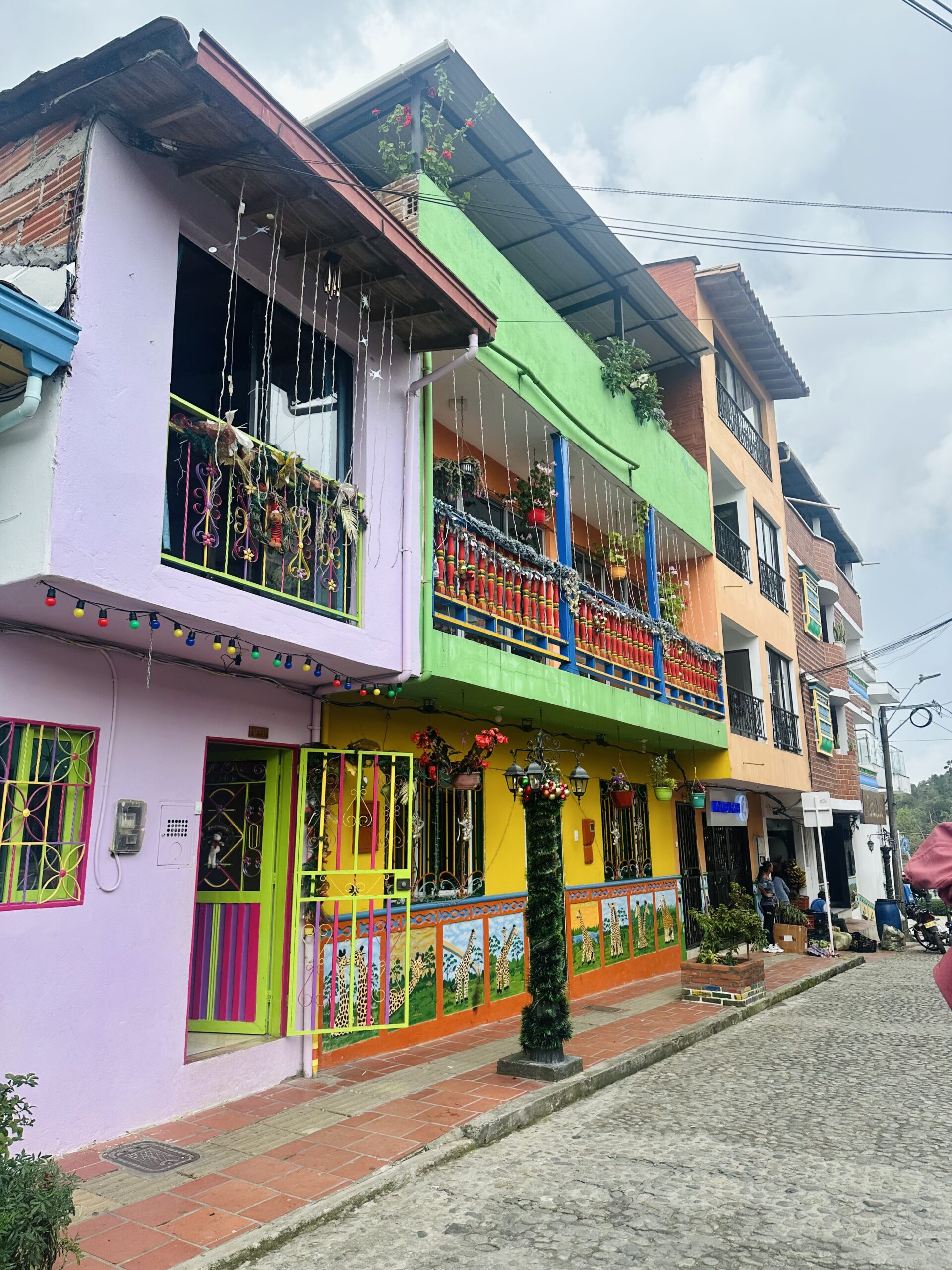
Guatapé village and the zócalos
Bogotá’s La Candelaria
Just as Guatapé’s zócalos reflected the identity of its people, street art in Bogotá’s La Candelaria told a different kind of story, one of social and political expression. The murals here were raw, thought-provoking, and bold, turning the streets into a living dialogue about Colombia’s past and present.
Beyond the murals, Bogotá’s rich history unfolded in its museums, the Gold Museum (Museo del Oro), the Botero Museum (Museo Botero), and the Museum of Money (Casa de Moneda), each offering a deeper glimpse into the country’s cultural and artistic heritage, taking us on a journey through time.
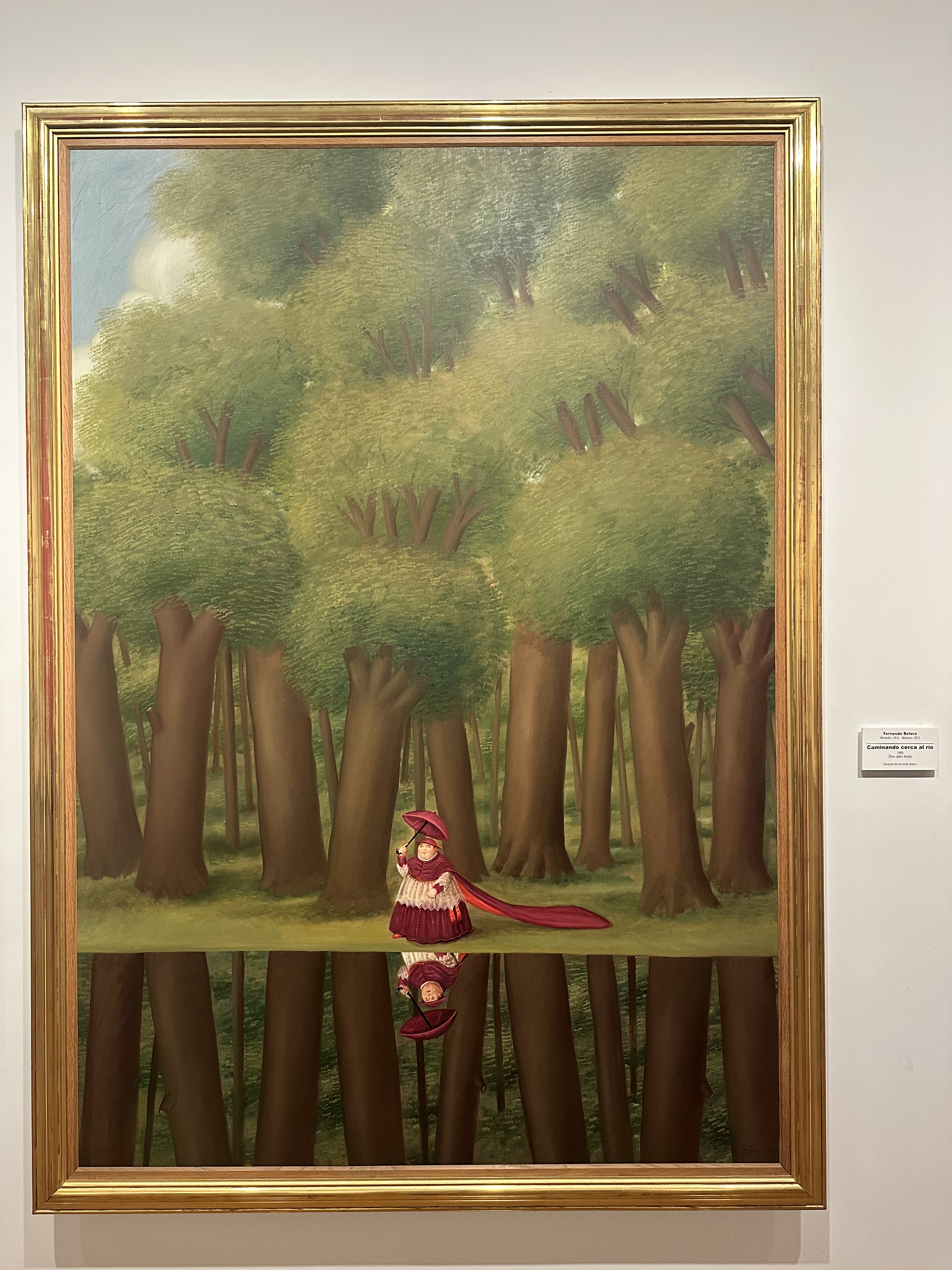
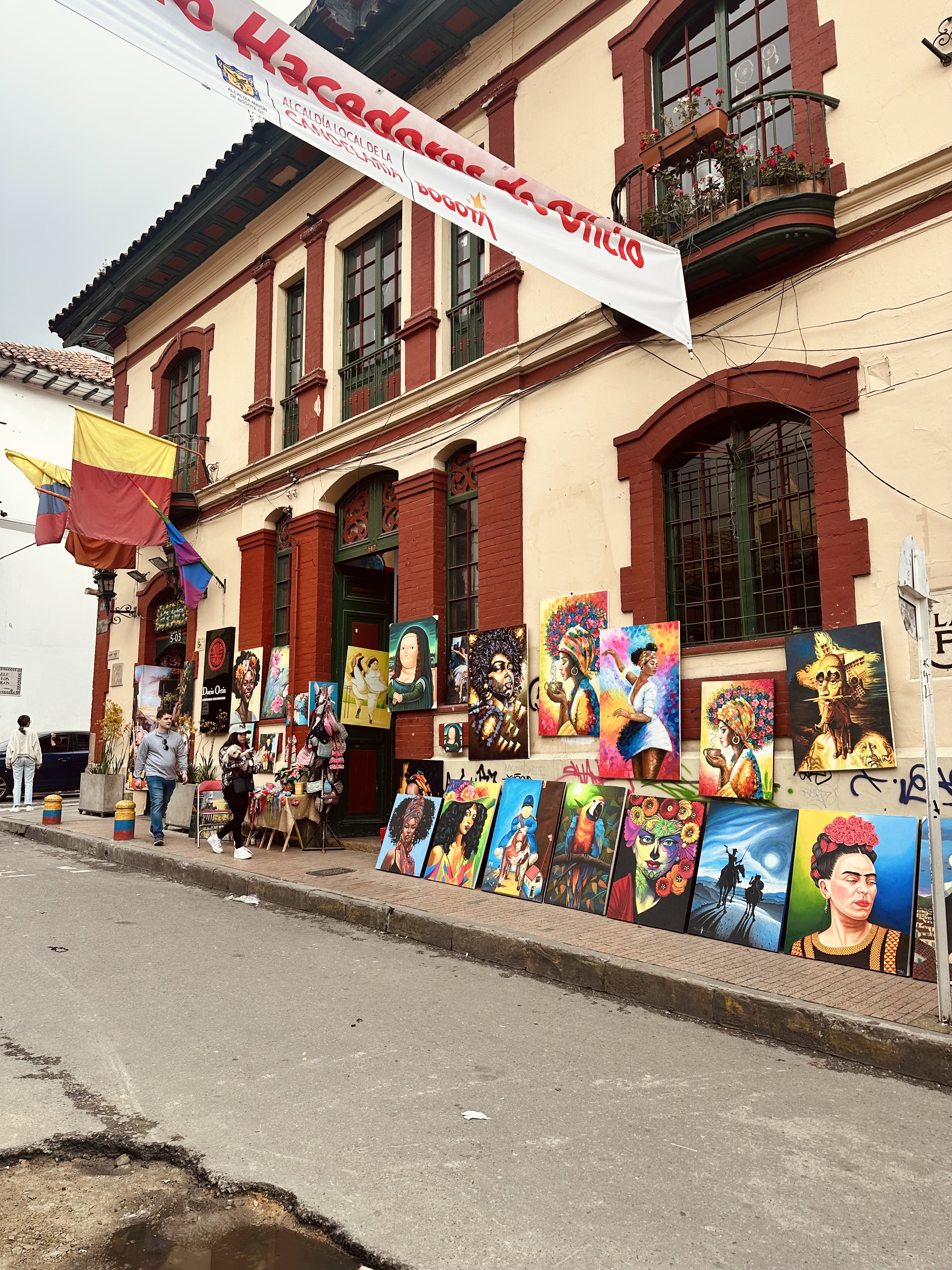


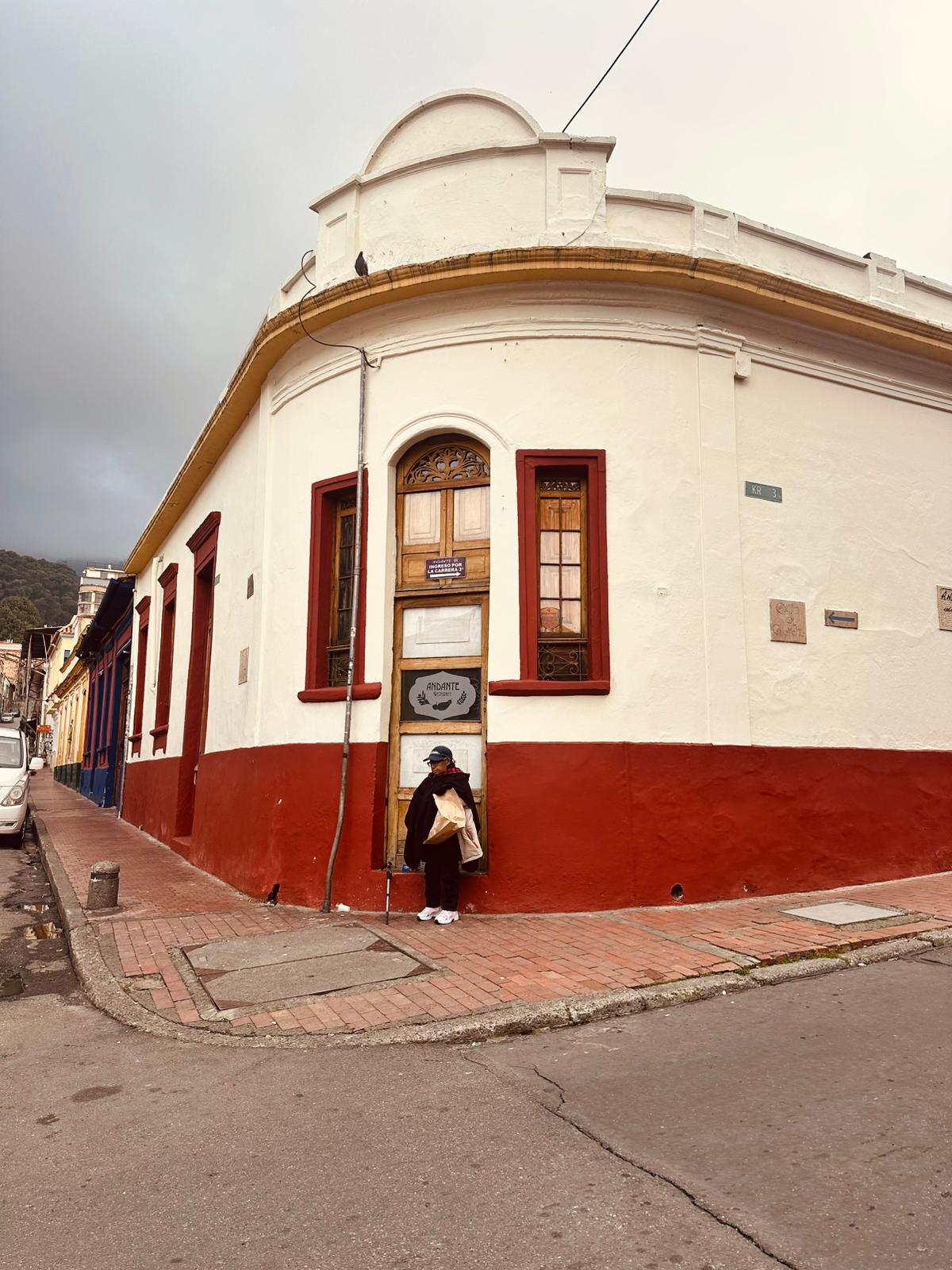
La Candelaria
The rhythms of the street: reggaetón and champeta
Colombia’s stories are not only painted on its walls but also woven into its music, filling the streets with rhythm and life. No journey through Colombia is complete without experiencing its music, which pulses through the streets with irresistible energy.
Reggaetón: Medellín’s urban beat
In Medellín, reggaetón is everywhere. It spills out of shop speakers, echoes through parks, and inspires impromptu dance routines. One evening, I found myself drawn to a small crowd gathered around a group of young performers. As the familiar beats of J Balvin and Maluma filled the air, the dancers’ moves brought the music to life. Their joy was infectious, and for a moment, I couldn’t help but tap my feet and sway along with the rhythm.
Champeta: Cartagena’s Soul
In Cartagena, the music shifts to champeta, a genre deeply rooted in Afro-Colombian culture. Late one evening, I stumbled upon a lively street performance where locals danced with unrestrained joy. The rhythm was unlike anything I had heard before, lively, soulful, and utterly magnetic. The crowd was a mix of locals and travelers, all moving together as if the music itself were the common language. It was one of those moments that stays with you long after the music has faded.
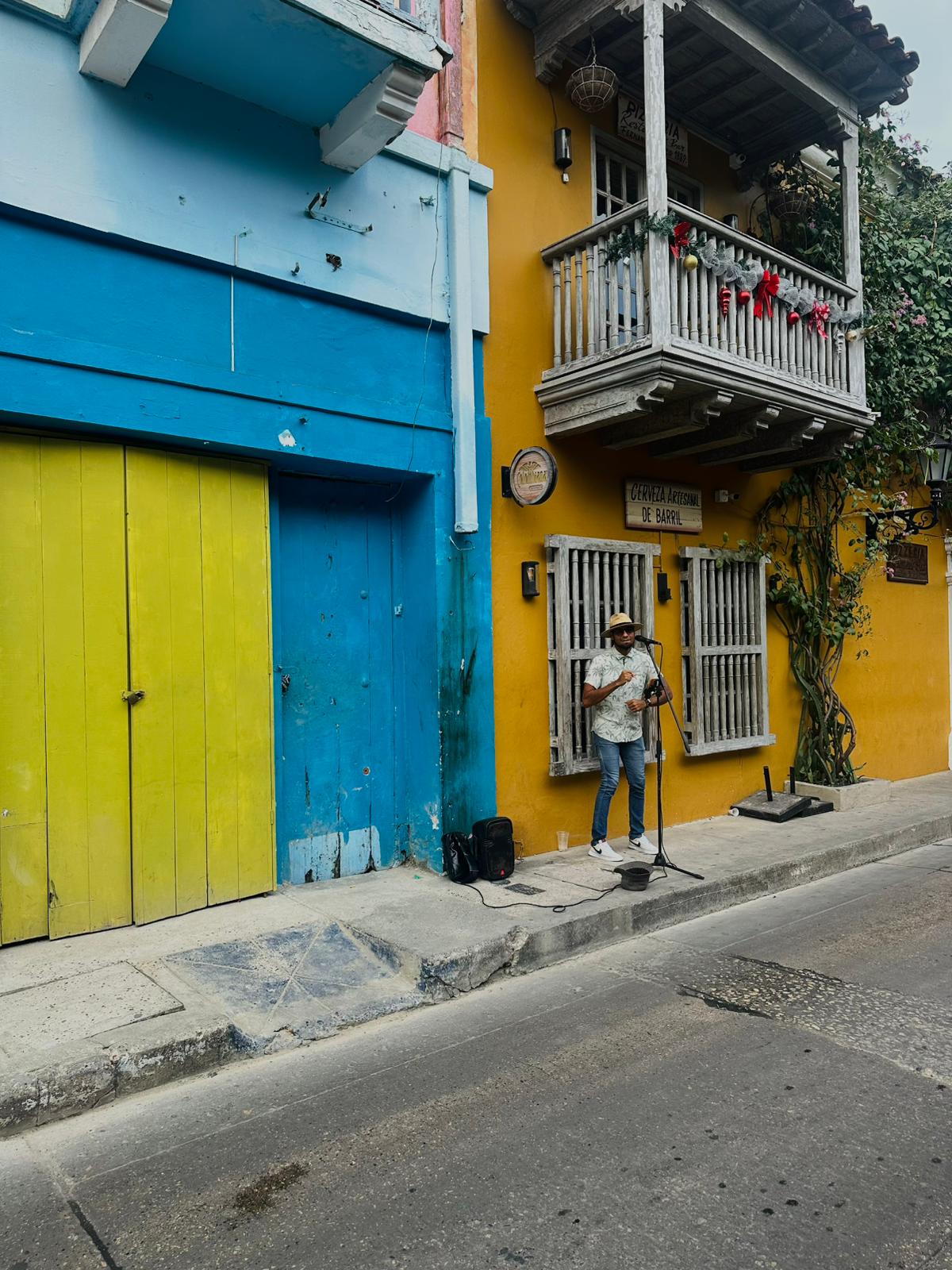
Champeta on the streets of Cartagena
The People and the Vibe
The true magic of Colombian streets however lies in the warmth and vitality of the people.
Nowhere is this more evident than on Sundays, when Bogotá closes its main streets to cars for Ciclovía. The city transforms into a vibrant playground, where families stroll, cyclists glide, and vendors set up colorful markets.
I remember one Sunday in particular. Children were dancing to champeta near a street corner, their energy drawing cheers from passersby. Nearby, a group of breakdancers flipped and spun to a beat that seemed to pulse through the entire city. Dogs trotted happily alongside their owners, and couples sipped coffee at pop-up stands. The streets felt alive, not just with activity but with a sense of connection and community. Even in the heart of the bustling capital, there was a rhythm and harmony that reflected the very essence of Colombia.
The streets of Colombia are more than just pathways; they are living, breathing testaments to the country’s culture and spirit. From the vibrant murals of Comuna 13 to the rhythms of reggaetón and champeta, every step reveals something extraordinary. Walking through these streets isn’t just about sightseeing, it’s about experiencing Colombia’s essence. Whether you’re savoring a freshly grilled arepa, marveling at Guatapé’s colorful zócalos, or dancing to the music that fills the air, the streets invite you to be part of their story.
Colombia’s streets don’t just reflect its heart, they are its heart. And once you’ve experienced them, they will stay with you forever.
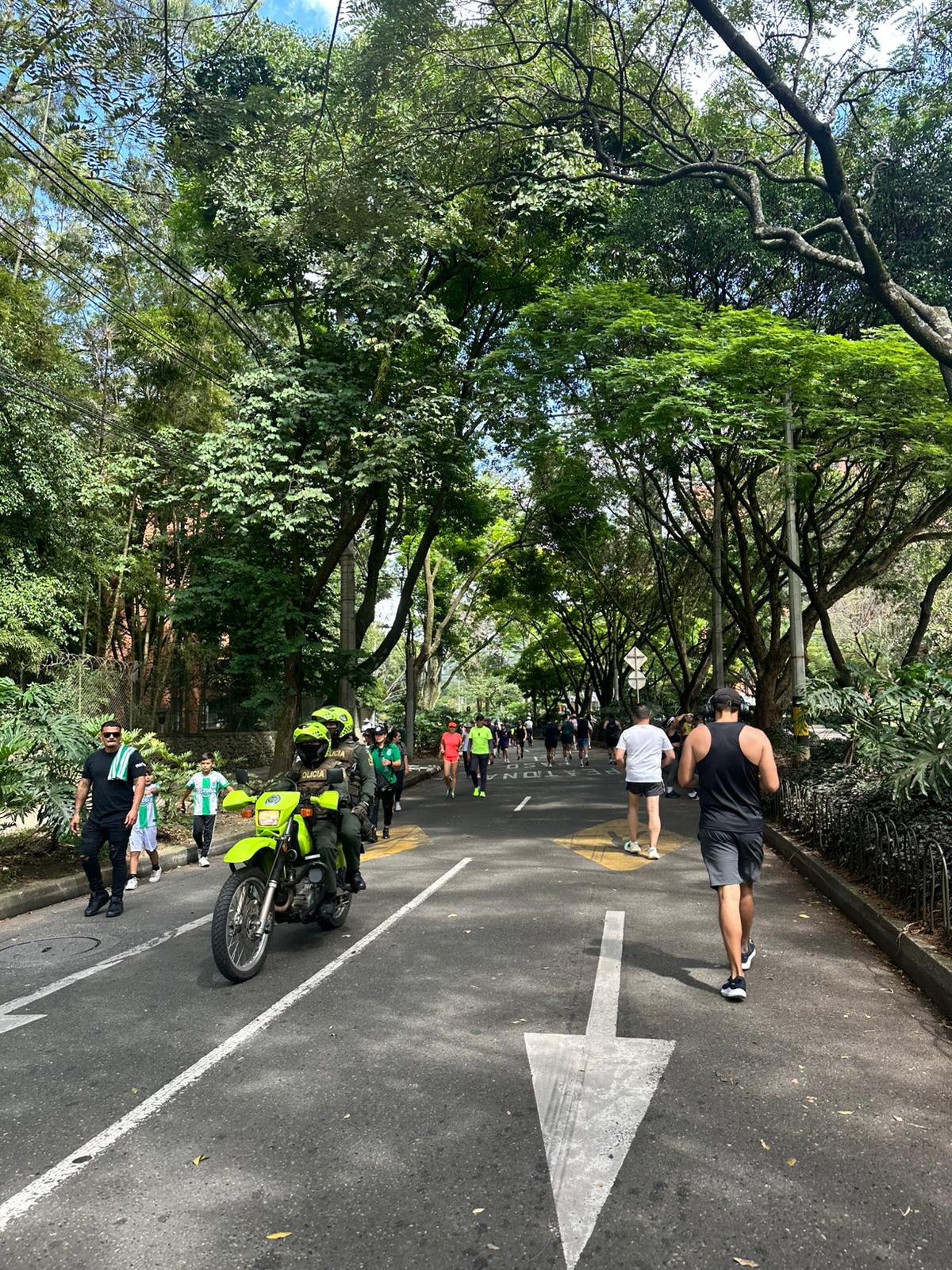
Ciclovía